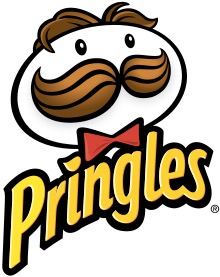Podcast (lead-with-a-story-podcast-series): Play in new window | Download | Embed
Subscribe: RSS
 Perseverance in the face of defeat is a required character trait in sports and politics. You have to lose a few games and races on the road to the Super Bowl or to Washington. But is persistence useful in business? Or does success in business only come by backing winners only as long as they’re winners? Consider the story of Pringles snack chips.
Perseverance in the face of defeat is a required character trait in sports and politics. You have to lose a few games and races on the road to the Super Bowl or to Washington. But is persistence useful in business? Or does success in business only come by backing winners only as long as they’re winners? Consider the story of Pringles snack chips.
Procter & Gamble first test marketed Pringles in September 1968 in Evansville, Indiana, and began shipping it to grocery stores across the United States in 1971. It was an instant success. By 1975, it had become a household name, had a 15 percent market share, and more than 10 million cases a year were being sold.
A year later, however, sales dropped 20 percent—enough to send any brand manager into panic mode. The following year, sales dropped another 10 percent. That’s probably when speculation began that the brand would be put up for sale. P&G wasn’t used to such steep sales declines. Certainly not two years in a row.
Another year went by, and another 10 percent of sales vanished. Can you imagine how hard it must have been to recruit employees to accept an assignment on Pringles with sales plummeting and rumors of a sale looming? By 1979, the brand was in free fall. Sales dropped over 30 percent, and were now down to 4 million cases a year—a 60 percent decline in four years! That’s when a line was drawn in the sand. P&G executives declared they would either fix the brand, or sell it, in five years.
Over the next 18 months, management put several major changes in place. It commissioned new research to develop a ground-up understanding of the consumer. Product improvements gave Pringles a better taste and more variety. New advertising touted the unique benefits of the saddle-shaped chips. A price reduction made Pringles more competitive with traditional potato chips. And a major cost savings project helped the brand afford the price reductions and product improvements.
Sales continued to decline, but at a much slower rate. In 1980, sales were down about half a million cases, to 3.4 million. And in 1981, they bottomed out at 3 million. The next year, sales started to grow—slowly at first, and then faster. By 1984, Pringles sales were 5 million cases. In 1986, it was up to 7 million. By 1989, sales were back to their 1975 peak of 10 million cases. And by the end of the 1990s, sales of Pringles were over 50 million cases.
The lesson
In December of 1984, just after the turnaround started, the head of P&G Sales, Mike Milligan, gave a speech to a group of employees, shareholders, and members of the press. In it, he shared five key lessons the company learned from the experience. In hindsight, the first three shouldn’t be too surprising: (1) know what your consumer wants, (2) develop a product and marketing messages to meet those expectations, and (3) organize a strong team to deliver results.
The fourth lesson was a little more interesting: Set realistic goals. Notice they adopted a five-year plan, not a one-year plan. They realized the magnitude of the changes they needed to make were too ambitious to accomplish in a matter of months. Despite that, they succeeded two years ahead of schedule.
The final lesson Mike explained, however, is the most telling of all, and the key point I want to make. He summarized it in two simple words: “Don’t stop.” Don’t give up too soon. Imagine how easy it would have been for management to give up on the Pringles brand. And how many times had they probably considered it in the late 1970s?
Instead, they persevered. They pushed on through six years of nerve-wracking sales declines and fixed the business. Compare this to most of today’s quarterly-profit-obsessed CEOs who flinch at the earliest signs of trouble and kowtow to Wall Street with promises of a quick exit.
As a result of that perseverance, Pringles became a star in the P&G stable of iconic brands, and was eventually sold to Kellogg in 2012 for $2.7 Billion.
Thomas Edison summarized the wisdom of perseverance in a single sentence when he observed, “Many of life’s failures are people who didn’t realize how close they were to success when they gave up.” Don’t be one of them.
Don’t be one of them.
[You can find this and over 100 other inspiring leadership stories in my book, Lead with a Story.]
—
 Paul Smith is one of the world’s leading experts on business storytelling. He’s a keynote speaker, storytelling coach, and bestselling author of the books Lead with a Story and Parenting with a Story.
Paul Smith is one of the world’s leading experts on business storytelling. He’s a keynote speaker, storytelling coach, and bestselling author of the books Lead with a Story and Parenting with a Story.

 Connect with him via email here.
Connect with him via email here.
Follow him on Facebook, LinkedIn, Twitter.
Sign up for his newsletter here to get one new story a week delivered to your inbox.
